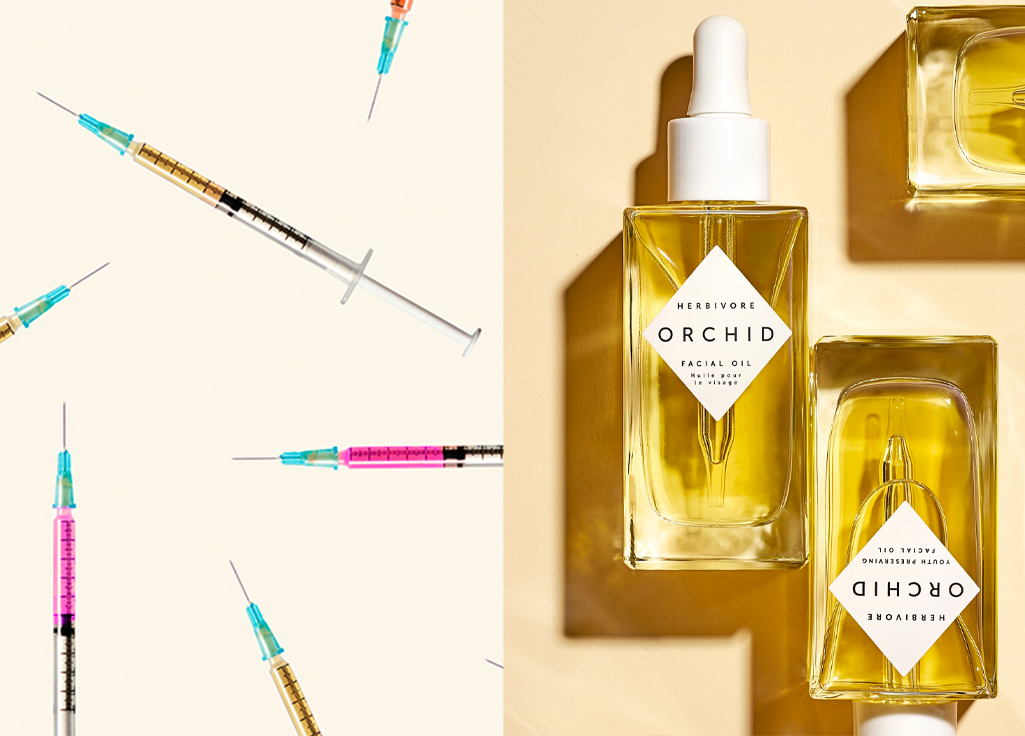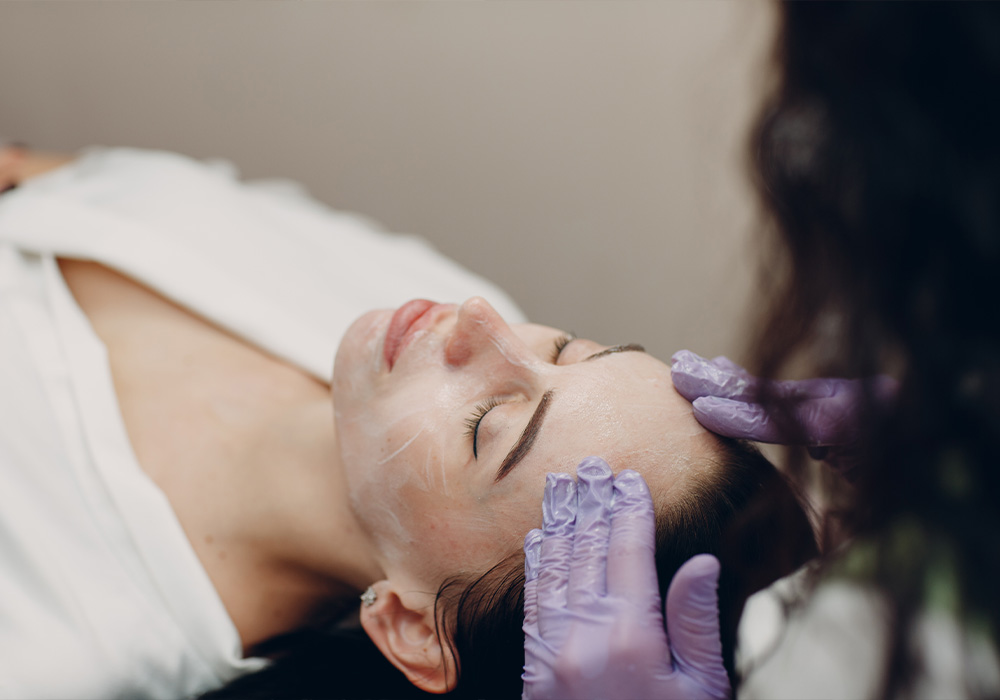If you’ve long been toying with the idea of a nose job but just couldn’t commit, consider a liquid rhinoplasty: the temporary, nonsurgical cousin to the traditional rhinoplasty. Here, everything to know about the noninvasive, in-office procedure everyone’s clamoring for.
What is a liquid rhinoplasty and how does it differ from a traditional rhinoplasty?
Unlike a traditional surgical rhinoplasty, which permanently alters the structure and position of the nose in the operating room, an injectable nose job uses dermal fillers (off-label) to “build” up the nose to temporarily improve the way it looks—think correcting humps and bumps and filling divots and defects in the nose—in 30 minutes. While the results of a “liquid nose job” are not permanent, they can be seen immediately.
How does the process of injecting the nose with filler work to fix imperfections? What kind of filler is used?
In your doctor’s office, topical numbing or ice is applied to the nose before filler is injected into the area of concern and then massaged into place. Brands vary, but hyaluronic filler is used—New York facial plastic surgeon Jennifer Levine, MD prefers Restylane or Juvéderm Ultra Plus; New York plastic surgeon Mokhtar Asaadi, MD also likes Juvéderm Voluma. “I typically start with 1cc of filler,” says Dr. Levine. In around 30 minutes, results will be apparent.
You May Also Like: Here’s What Getting a Nose Job Is Really Like
What concerns can a liquid nose job address?
Dr. Asaadi warns that not all nose concerns are cooperative with a nonsurgical rhinoplasty, and it’s important to understand what a “liquid nose job” can and cannot accomplish. “It can only correct minor deformities of the nose,” he says. Dr. Levine adds: “Nonsurgical rhinoplasty can help in camouflaging a bump, correcting asymmetries, rotating the tip or making the nose appear narrower by adding dorsal height.”
What concerns can a nonsurgical rhinoplasty not address?
“Filler cannot accomplish many things that traditional rhinoplasty can,” says Dr. Levine. “It can’t correct a large nasal hump, a nasal tip with too much projection or an asymmetrical or crooked nose,” adds Dr. Asaadi.
Another thing to remember if you’re in the market for a nonsurgical rhinoplasty: It cannot make the nose smaller. “Many patients need a reduction rhinoplasty, which filler cannot accomplish since it makes the nose slightly larger,” Dr. Levine contends. It also cannot be used to add definition to the tip of the nose. (More on this below.)

Are there any risks associated with a liquid rhinoplasty?
“Nasal anatomy is very specific and delicate,” stresses Dr. Levine. “The vasculature of the nose makes certain areas ‘no fly zones’ and what seems good in theory, may be quite dangerous in practice. The vascular supply to the tip of the nose is extremely fragile and damage to this area can be disastrous,” says Dr. Levine.
The safest place to inject is along the bridge of the nose, away from the major arteries. When a retinal artery is occluded, blindness can occur immediately. Because the nasal anatomy is extremely fragile, it should only be trusted in the hands of board-certified physicians who are skilled in surgical rhinoplasty.
Who is the ideal candidate for a nonsurgical nose job?
Dr. Levine says realistic expectations are key. “The ideal candidate is a patient that has realistic expectations and a specific concern such as camouflaging a bump or addressing some asymmetries or rotating a tip,” says Dr. Levine. “The patient should understand that adding filler to the nose can make it larger even though it may appear smoother. Patients who want their noses to be smaller overall should not have a nonsurgical rhinoplasty. While adding filler to the top of the nose, or the dorsum, can make it appear narrower, it does not make the nose smaller overall.”
How much does a nonsurgical rhinoplasty usually cost?
Cost varies by provider, location and the type and amount of filler used, but costs usually starts at around $1,000.
How long do the results of a nonsurgical nose job last?
Because there’s not much movement in the nose, the results of a nonsurgical rhinoplasty can last anywhere from 9-12 months, though Dr. Asaadi says it may last longer in some cases.
Is there any downtime associated with a liquid nose job?
Perhaps the best thing about a nonsurgical rhinoplasty is that there’s next to no downtime. Expect minor swelling for the first 48 hours, and Dr. Levine says it may take up to two weeks for it to fully settle. “There’s not much bruising or swelling,” says Dr. Asaadi. “Patients resume their normal activities immediately after leaving the office.”
The doctors offer up some post-op tips: Dr. Levine suggests avoiding wearing glasses for the first 48 hours; Dr. Asaadi suggests avoiding aspirin or any medications that may cause bruising before treatment. As always, the best piece of advice is to have a conversation with your board-certified physician to properly weigh your options.

















